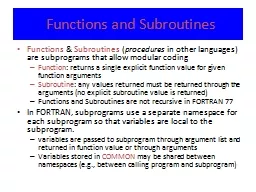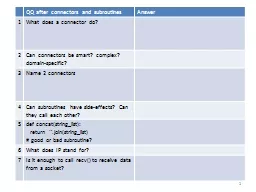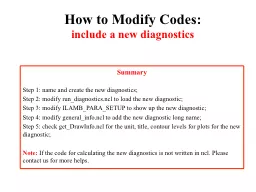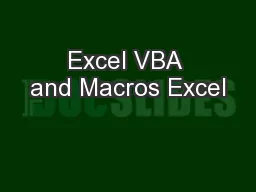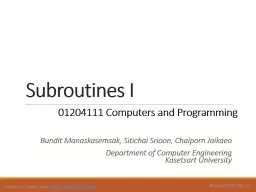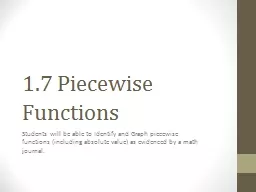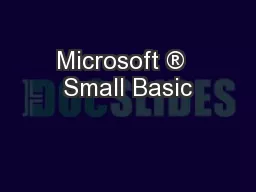PPT-Functions and Subroutines
Author : liane-varnes | Published Date : 2017-09-05
Functions amp Subroutines procedures in other languages are subprograms that allow modular coding Function returns a single explicit function value for given
Presentation Embed Code
Download Presentation
Download Presentation The PPT/PDF document "Functions and Subroutines" is the property of its rightful owner. Permission is granted to download and print the materials on this website for personal, non-commercial use only, and to display it on your personal computer provided you do not modify the materials and that you retain all copyright notices contained in the materials. By downloading content from our website, you accept the terms of this agreement.
Functions and Subroutines: Transcript
Download Rules Of Document
"Functions and Subroutines"The content belongs to its owner. You may download and print it for personal use, without modification, and keep all copyright notices. By downloading, you agree to these terms.
Related Documents

